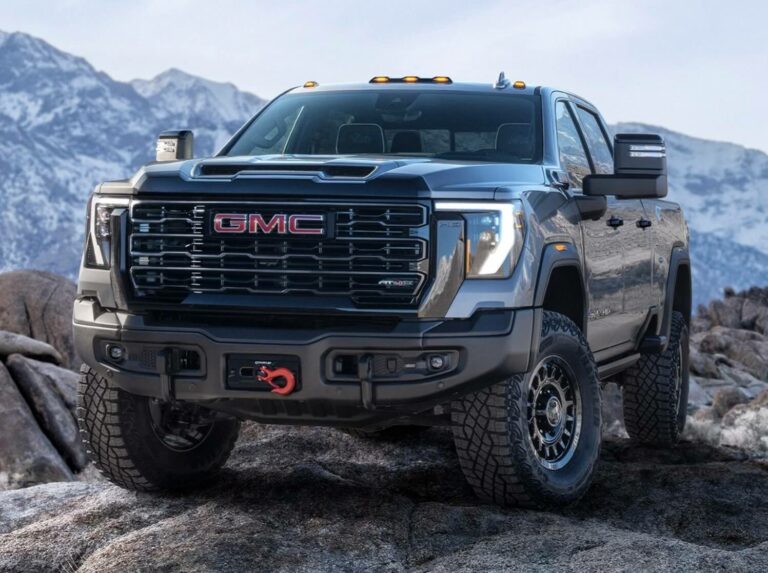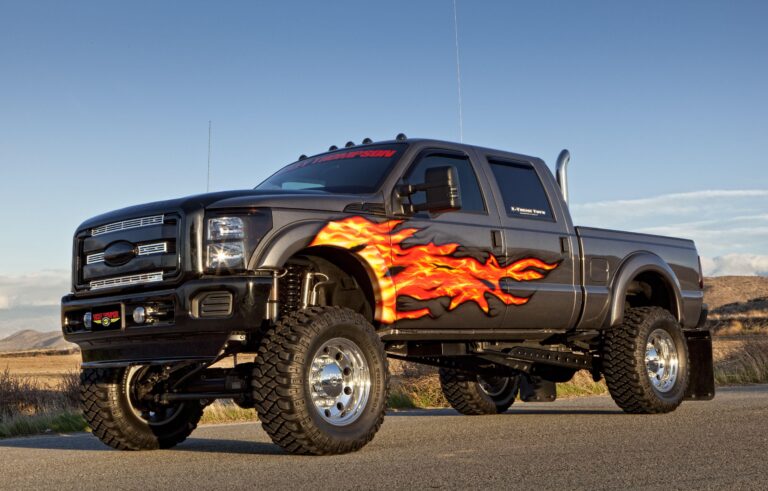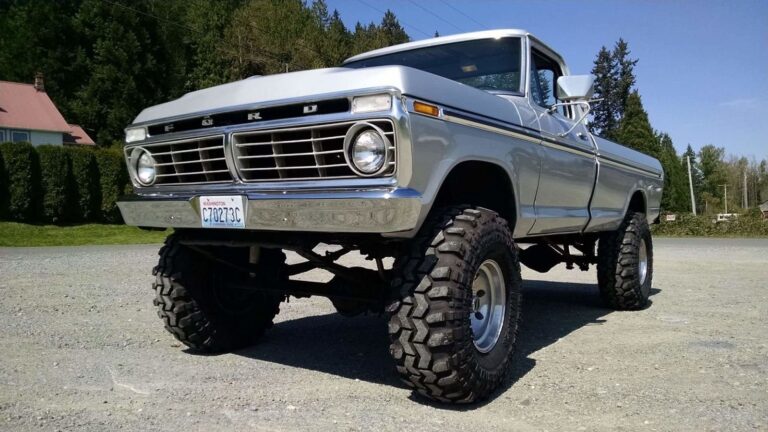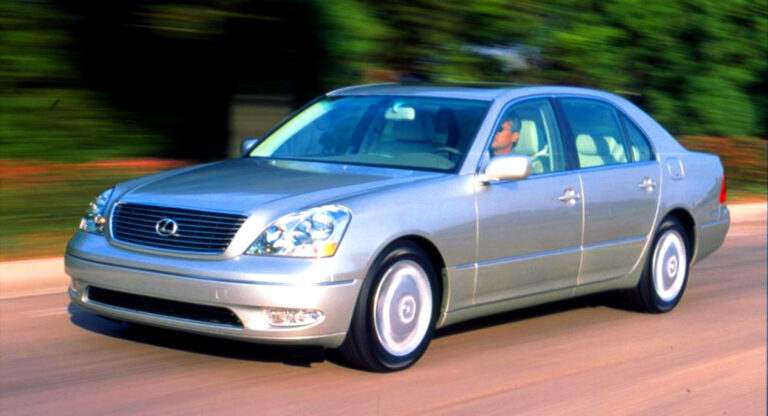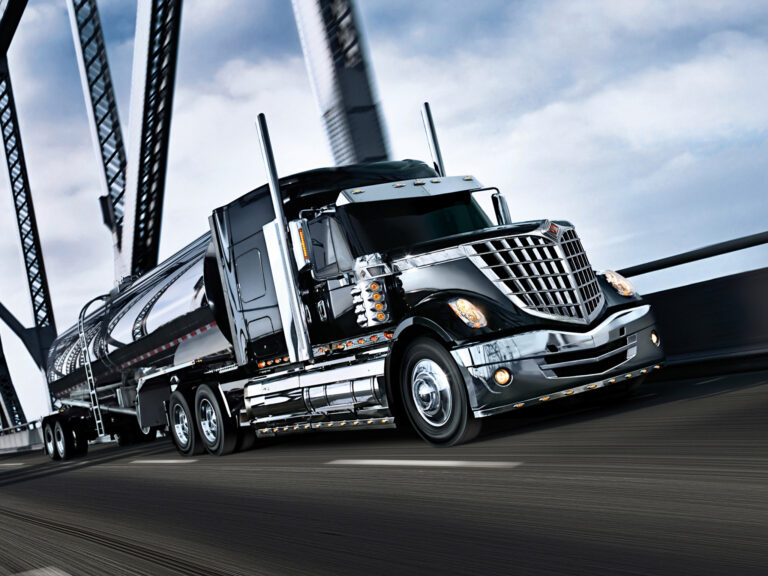Used 1980s Chevy Trucks For Sale: A Comprehensive Buyer’s Guide
Used 1980s Chevy Trucks For Sale: A Comprehensive Buyer’s Guide cars.truckstrend.com
The roar of a carbureted V8, the unmistakable lines of a classic American pickup, and the feeling of a vehicle built to last – these are just some of the reasons why used 1980s Chevy trucks continue to captivate enthusiasts and practical buyers alike. More than just old vehicles, these trucks represent a golden era of automotive design and engineering, offering a unique blend of rugged simplicity, undeniable style, and surprising versatility. Whether you’re a seasoned collector, a first-time classic truck owner, or someone seeking a dependable workhorse with character, diving into the market for a 1980s Chevy truck can be a rewarding journey. This comprehensive guide will navigate you through the various aspects of finding, evaluating, and owning one of these iconic machines.
The Enduring Appeal of 1980s Chevy Trucks
Used 1980s Chevy Trucks For Sale: A Comprehensive Buyer’s Guide
The 1980s were a pivotal decade for American pickups, blending the last vestiges of the "square body" era with the introduction of more modern designs. Chevy trucks from this period, particularly the C/K series, S-10, Blazer, and Suburban, have cultivated a cult following for several compelling reasons:
- Nostalgia and Iconic Styling: For many, these trucks evoke a strong sense of nostalgia, reminiscent of simpler times or the vehicles of their youth. The C/K series (often referred to as "square bodies" even into the early 80s, and later the R/V series for the continued older body style alongside the new GMT400) boasts a timeless, no-nonsense design that stands out from modern rounded vehicles.
- Simplicity and Durability: Built before the widespread advent of complex electronics and emission controls, these trucks are mechanically straightforward. This translates to easier diagnosis, more affordable repairs, and a robust build quality designed for hard work, often leading to impressive longevity.
- Customization Potential: The aftermarket support for 1980s Chevy trucks is immense. From suspension lifts and lowering kits to engine upgrades, interior renovations, and body modifications, owners have a blank canvas to personalize their truck to their exact specifications, whether for show, off-roading, or daily driving.
- Investment Potential: Well-maintained or expertly restored examples of 1980s Chevy trucks, especially certain C/K models, are steadily appreciating in value. They are increasingly seen not just as vehicles, but as tangible assets and collectible pieces of American automotive history.
- Versatility: These trucks are incredibly versatile. A C10 can be a stylish cruiser, a K10 an off-road beast, an S-10 a fuel-efficient daily driver, and a Suburban an ultimate family hauler or tow rig. Their adaptability makes them suitable for a wide range of uses.

Key Models to Look For
The 1980s saw a diverse range of Chevy trucks. Understanding the different models and their characteristics is crucial for making an informed decision.
C/K Series (C10/C20/C30, K10/K20/K30)
These are the full-size pickups and the most iconic of the era. The "C" denotes 2-wheel drive, while "K" signifies 4-wheel drive. The numbers refer to the duty rating (10 for half-ton, 20 for three-quarter ton, 30 for one-ton).
- 1980-1987 (Square Body / R/V Series): These trucks represent the latter half of the popular "square body" generation (1973-1987). For 1987, GM introduced the "R" and "V" designations for the continuing square body trucks (R for 2WD, V for 4WD) as the new GMT400 platform was also being released. They are highly sought after for their classic looks.
- Common Engines: 305 ci (5.0L) V8, 350 ci (5.7L) V8, 454 ci (7.4L) V8 (big block), and even some Detroit Diesel options (6.2L diesel V8). The 350 is perhaps the most desirable for its balance of power, reliability, and parts availability.
- Trim Levels: Scottsdale (base), Cheyenne (mid-range), Silverado (top-tier, offering more comfort and amenities).
- 1988-1989 (GMT400 Platform): Starting in 1988, Chevrolet introduced the completely redesigned GMT400 platform for its full-size pickups. These trucks featured a more aerodynamic, modern design and are often referred to as "OBS" (Old Body Style) trucks by enthusiasts. While different in styling, they maintain much of the 80s ruggedness and simplicity. They quickly gained popularity for their improved ride quality and ergonomics.
- Common Engines: 4.3L V6, 305 ci (5.0L) V8, 350 ci (5.7L) V8.
S-10 / S-15
Introduced in 1982, the S-10 was Chevrolet’s answer to the growing demand for compact pickups. Its GMC counterpart was the S-15.
- Benefits: More fuel-efficient, easier to maneuver in urban environments, and a good choice for lighter-duty tasks.
- Common Engines: Various inline-4s (2.5L Iron Duke) and V6s (2.8L, later the more desirable 4.3L V6).
Blazer / Suburban
These full-size SUVs shared platforms and powertrains with the C/K series trucks.
- Blazer (K5): A two-door SUV, the 1980s K5 Blazer is iconic, especially the early 80s models with their removable hardtops. A favorite for off-roaders and customizers.
- Suburban: The ultimate full-size family hauler and tow vehicle, the 1980s Suburban offers massive interior space and robust towing capabilities. It’s a fantastic option for those needing utility combined with classic style.
What to Inspect Before You Buy
Purchasing a vehicle that’s 30-40 years old requires a thorough inspection. While some issues are expected, knowing what to look for can prevent costly surprises.
- Rust: This is the #1 enemy of older Chevy trucks. Check:
- Cab Corners and Rocker Panels: These are notorious rust spots due to trapped moisture.
- Wheel Wells: Both front and rear.
- Bed Floor and Sides: Especially near the wheel wells and tailgate.
- Frame: Inspect for any significant rust, cracks, or previous poor repairs. Pay attention to body mounts.
- Inner Fenders and Core Support: Often overlooked, but important structural areas.
- Engine:
- Leaks: Look for oil, coolant, or power steering fluid leaks.
- Noises: Listen for knocking, ticking, or grinding sounds.
- Smoke: Blue smoke (oil burning), white smoke (coolant), black smoke (rich fuel mixture).
- Fluid Condition: Check oil (dark but not sludgy) and coolant (clean, correct color).
- Cold Start: Ideally, hear it start from cold to detect issues.
- Transmission:
- Shifting: Test drive to ensure smooth shifts in all gears (automatic) or clutch engagement (manual).
- Fluid: Check condition and level (should be red, not brown or burnt-smelling).
- Noises: Listen for whining or clunking sounds.
- Drivetrain (for 4×4):
- Transfer Case: Engage 4WD (high and low) to ensure it shifts smoothly and locks in.
- U-Joints: Check for play or clunking sounds.
- Differentials: Listen for unusual noises during turns or acceleration.
- Suspension & Steering:
- Bushings: Look for cracked or worn suspension bushings.
- Ball Joints & Tie Rods: Check for play.
- Shocks: Look for leaks or excessive bouncing.
- Steering Play: Excessive looseness in the steering wheel indicates worn components.
- Power Steering: Check for leaks and proper function.
- Brakes:
- Pedal Feel: Should be firm, not spongy.
- Stopping Power: Ensure it stops straight without pulling.
- Rotor/Drum Condition: Visually inspect if possible.
- Fluid: Check reservoir level and condition.
- Electrical: Test all lights (headlights, taillights, turn signals, brake lights), gauges, horn, wipers, heater/AC, and any power accessories (windows, locks).
- Interior: Assess the condition of the seats, dashboard (cracks are common), carpet, and headliner. Factor in replacement costs for major interior components.
- Frame & Undercarriage: Inspect the entire frame for any signs of accident damage, bends, or amateur repairs.
- Documentation: Verify the title, check for service records, and compare the odometer reading with the vehicle’s condition (though odometers often roll over or are replaced).
Understanding the Market & Pricing
The market for 1980s Chevy trucks is diverse, with prices varying wildly based on condition, rarity, and location.
Factors Influencing Price:
- Condition: A rust-free, original, well-maintained truck will command a higher price than a project truck. Fully restored or restomodded trucks (restored with modern upgrades) will be at the top end.
- Mileage: Lower mileage generally means higher value, assuming condition aligns.
- Trim Level: Silverado models typically fetch more than Scottsdale or Cheyenne.
- Engine: The 350 ci V8 is popular, and the 454 big block is also highly sought after.
- 2WD vs. 4WD: K-series (4×4) trucks often command a premium over C-series (2WD), especially in areas where 4WD is desirable.
- Cab/Bed Configuration: Regular cab, extended cab, crew cab, short bed, long bed – these all impact desirability and price. Short bed regular cabs (especially C10s/K10s) are often the most desirable.
- Location: Prices can vary regionally based on demand and climate (e.g., rust-free trucks are more expensive in the Rust Belt).
Where to Find Them:
- Online Marketplaces: eBay Motors, Craigslist, Facebook Marketplace, OfferUp. Be cautious and verify sellers.
- Classic Car Specific Sites: Bring a Trailer, Hemmings, ClassicCars.com. These often feature higher-quality, more expensive vehicles.
- Local Classifieds & Dealerships: Check local papers or used car lots specializing in older vehicles.
- Auctions: Live and online auctions can offer good deals, but require quick decision-making and thorough pre-inspection.
- Word of Mouth: Sometimes the best deals are found through friends, family, or local car clubs.
Common Pitfalls & Negotiation Tips:
- Undisclosed Issues: Sellers may not be aware of or may hide problems. A pre-purchase inspection by a trusted mechanic is highly recommended.
- Salvage Titles: Be very wary of salvage or rebuilt titles, as they significantly impact value and insurability.
- Inflated Prices: Do your research. Compare similar trucks in your area and online to ensure the asking price is fair.
- Negotiation: Don’t be afraid to negotiate. Point out any flaws you find to justify a lower offer. Be patient and willing to walk away if the deal isn’t right.
Owning and Maintaining Your 1980s Chevy Truck
Once you’ve found your ideal 1980s Chevy truck, the journey continues with ownership and maintenance.
Parts Availability:
One of the greatest advantages of these trucks is the excellent parts availability. Due to their high production numbers and shared components across various GM vehicles, mechanical parts (engine, transmission, suspension, brakes) are readily available, often new from auto parts stores. Body panels and interior components can be found from specialized classic truck suppliers, salvage yards, or online marketplaces.
Common Maintenance:
- Fluid Changes: Regular oil changes, transmission fluid, differential fluid, and coolant flushes are crucial.
- Tune-Ups: Spark plugs, wires, distributor cap, rotor, and carburetor adjustments (if applicable) are essential for smooth running.
- Rust Prevention: Wash the truck regularly, especially after driving in salt or harsh conditions. Consider applying rust inhibitors to the undercarriage.
- Addressing Leaks: Don’t ignore leaks; address them promptly to prevent larger issues.
Upgrades & Modifications:
Many owners choose to upgrade their 1980s Chevy trucks. Popular modifications include:
- Engine Swaps: Upgrading to a more powerful modern LS engine is common.
- Suspension: Lowering kits for street trucks or lift kits for off-roaders.
- Brakes: Upgrading to disc brakes all around for improved stopping power.
- Interior: Modernizing the stereo, adding air conditioning, or installing more comfortable seats.
- Fuel System: Converting from carburetor to electronic fuel injection (EFI) for better reliability and efficiency.
Insurance:
If your truck is not a daily driver and is primarily a hobby vehicle, consider classic car insurance. It often offers better coverage at a lower premium, based on agreed value rather than depreciated value.
Finding a Mechanic:
While simple, not all modern mechanics are familiar with older carbureted vehicles. Seek out shops specializing in classic cars or those with experienced, older mechanics. Many owners also find satisfaction in learning to perform their own maintenance and repairs.
Price Table: Used 1980s Chevy Trucks For Sale (Estimated Ranges)
| Model & Year Range | Condition: Fair ($) | Condition: Good ($) | Condition: Excellent/Restored ($) | Notes |
|---|---|---|---|---|
| C10 (1980-1987, 2WD Half-Ton) | $3,000 – $8,000 | $8,000 – $20,000 | $20,000 – $50,000+ | Short bed, V8, Silverado trims command higher prices. |
| K10 (1980-1987, 4WD Half-Ton) | $4,000 – $10,000 | $10,000 – $25,000 | $25,000 – $60,000+ | 4×4 premium, especially for rust-free examples. |
| C20/C30 (1980-1987, 2WD 3/4 & 1-Ton) | $2,500 – $7,000 | $7,000 – $15,000 | $15,000 – $35,000+ | Often work trucks, check for heavy wear/abuse. |
| K20/K30 (1980-1987, 4WD 3/4 & 1-Ton) | $3,500 – $9,000 | $9,000 – $20,000 | $20,000 – $45,000+ | Great for heavy towing or off-roading. |
| C/K 1500/2500/3500 (1988-1989, GMT400) | $2,000 – $6,000 | $6,000 – $15,000 | $15,000 – $30,000+ | More modern styling, slightly better ride. Still gaining classic status. |
| S-10 / S-15 (1982-1989, Compact) | $1,500 – $5,000 | $5,000 – $10,000 | $10,000 – $25,000+ | 4.3L V6 models are more desirable. Good for project builds. |
| K5 Blazer (1980-1989) | $5,000 – $12,000 | $12,000 – $30,000 | $30,000 – $70,000+ | Removable top models (early 80s) are highly sought after. |
| Suburban (1980-1989) | $3,000 – $8,000 | $8,000 – $20,000 | $20,000 – $45,000+ | Excellent family haulers/tow rigs. Check for interior wear. |
Note: These are estimated ranges and can fluctuate based on specific year, engine, transmission, options, geographic location, and market demand.
Frequently Asked Questions (FAQ)
Q1: Are 1980s Chevy trucks reliable?
A1: Generally, yes. Their mechanical simplicity makes them robust and easier to maintain. With proper care and addressing common wear items, they can be very reliable daily drivers.
Q2: What’s the difference between a "C" and a "K" series truck?
A2: "C" denotes a 2-wheel drive (2WD) truck, while "K" denotes a 4-wheel drive (4WD) truck.
Q3: Are parts hard to find for these trucks?
A3: No, parts availability is excellent. Due to high production numbers and shared components, mechanical parts are readily available from most auto parts stores. Reproduction body and interior parts are also widely available from specialty suppliers.
Q4: What are the most common rust areas to check?
A4: Focus on cab corners, rocker panels, wheel wells, bed floor, and the frame. Inner fenders and the core support can also rust significantly.
Q5: Can a 1980s Chevy truck be a daily driver?
A5: Absolutely. Many owners use them as daily drivers. However, be prepared for regular maintenance, potentially lower fuel economy compared to modern vehicles, and fewer safety features. Upgrades like EFI conversions can improve daily drivability.
Q6: What is a "square body" truck?
A6: "Square body" refers to the iconic body style of Chevrolet and GMC C/K series trucks produced from 1973 to 1987 (and through 1991 for Blazers, Suburbans, and duallies, under the R/V designation). The term is often broadly applied to full-size trucks of the early to mid-80s due to their similar aesthetic.
Q7: Are 4×4 versions more expensive than 2WD?
A7: Typically, yes. K-series (4×4) trucks generally command a higher price than their C-series (2WD) counterparts, especially in good condition or with desirable options.
Conclusion
The market for used 1980s Chevy trucks is vibrant and growing, reflecting a deep appreciation for their classic lines, mechanical simplicity, and enduring utility. From the iconic "square body" C/K series to the versatile S-10 and the spacious Blazer/Suburban, there’s a 1980s Chevy truck out there for nearly every taste and need. While purchasing an older vehicle always comes with its caveats, thorough research, diligent inspection, and a clear understanding of your needs will pave the way for a rewarding ownership experience. More than just a mode of transport, these trucks are a tangible piece of automotive history, offering a unique blend of nostalgia, practicality, and the timeless appeal of American craftsmanship. Embark on your search, and you might just find yourself behind the wheel of a classic that’s ready for decades more adventure.
